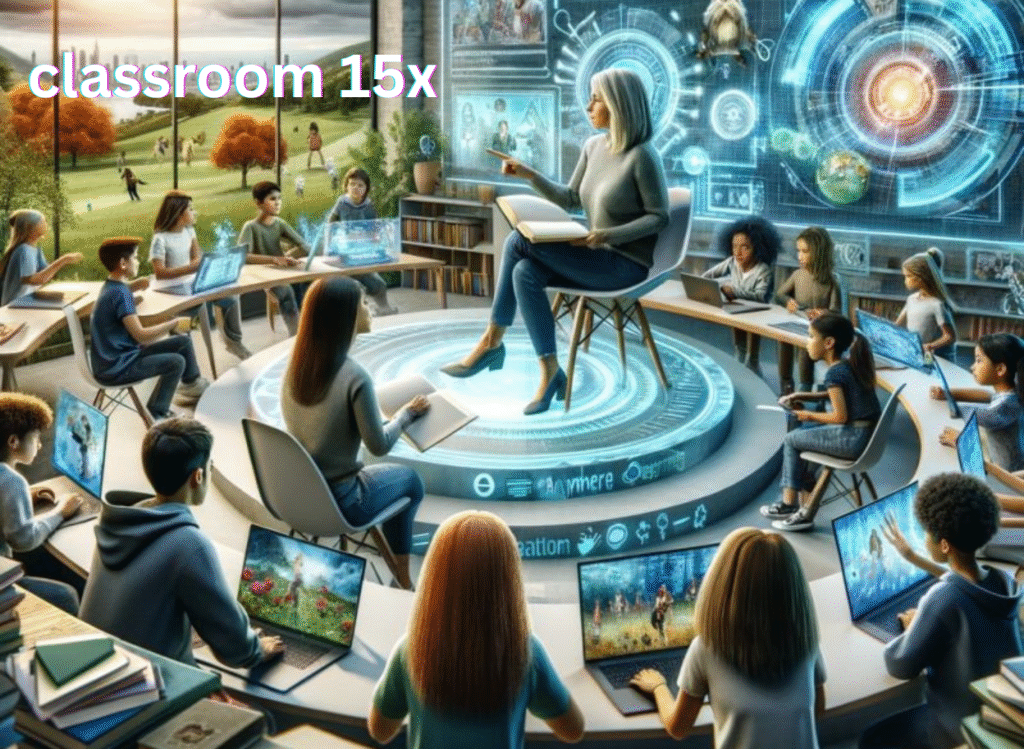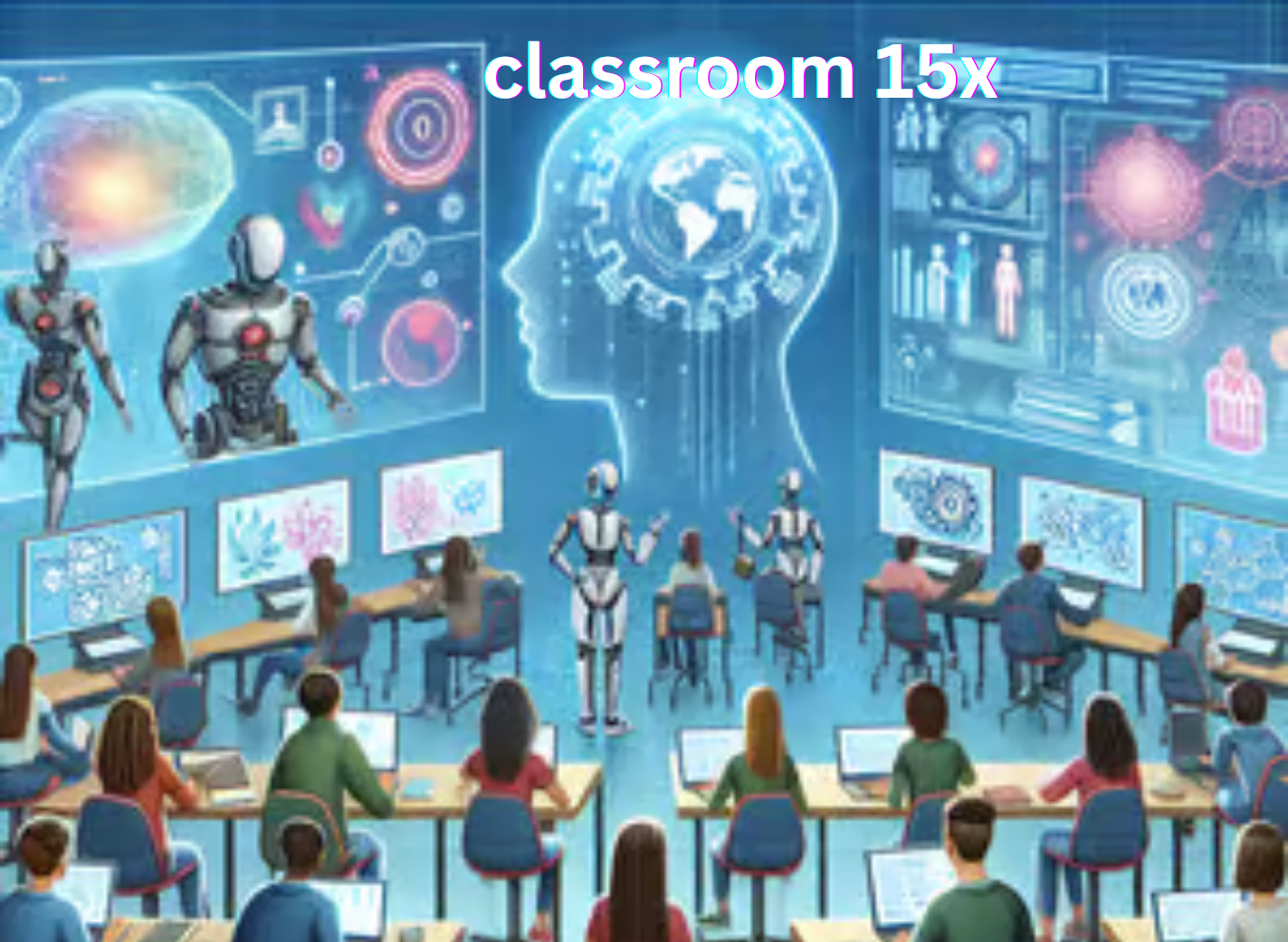The world of education is constantly evolving, and the traditional classroom model is being redefined. Enter the Classroom 15x, a concept that is revolutionizing how students learn and interact with their environments. This innovative approach to education focuses on scalability, personalized learning, and leveraging cutting-edge technology to provide an enhanced learning experience for both students and educators. In this article, we will explore what Classroom 15x is, its core components, how it’s being implemented in different educational settings, its measurable impacts, and how it is shaping the future of education.
Understanding Classroom 15x Definition and Philosophy
At its core, Classroom 15x is about maximizing the potential of educational environments to create scalable, adaptable, and personalized learning experiences for students. The term “15x” refers to the idea of improving education by up to 15 times compared to traditional learning models in terms of engagement, performance, and reach. While this might sound ambitious, the essence of Classroom 15x is rooted in the principles of adaptive learning, collaborative spaces, and real-time data-driven insights.
The philosophy behind Classroom 15x focuses on eliminating barriers to learning by incorporating personalized learning methods, advanced technology, and a collaborative approach. In this model, every student’s needs are met individually, whether through personalized lesson plans or real-time feedback. The classroom becomes more than just a space for passive learning—it evolves into a dynamic, interactive environment where students take charge of their educational journeys. Traditional classrooms, on the other hand, often limit learning due to their one-size-fits-all approach, which fails to account for the diverse needs of students. Classroom 15x overcomes these limitations by prioritizing flexibility, inclusivity, and technology.
The impact of this approach is far-reaching. It doesn’t just improve individual student outcomes but also enhances overall classroom dynamics. Teachers are no longer the sole source of knowledge; instead, they act as facilitators, guiding students as they navigate their personalized learning paths. By empowering students and teachers with the right tools and resources, Classroom 15x creates an educational ecosystem where innovation thrives.
Core Components of the Classroom 15x Framework
To understand the full impact of Classroom 15x, it’s important to examine its core components. These elements form the backbone of the model, ensuring it meets the diverse needs of students while integrating the best of modern technology and pedagogy.
Personalized Learning
One of the key aspects of Classroom 15x is its focus on personalized learning. Every student learns differently, and this approach seeks to cater to those differences by offering individualized learning experiences. Advanced technologies, like adaptive learning platforms, track student progress and adjust the curriculum in real time based on their strengths and weaknesses. This means no student is left behind, and the pace of learning is tailored to their needs.
This personalized approach helps address a variety of learning styles, whether visual, auditory, or kinesthetic, ensuring that each student can engage with the material in the way that works best for them. Moreover, personalized learning fosters a greater sense of ownership and responsibility in students, as they are given the autonomy to progress at their own pace, with guidance from teachers when needed.
Scalable Technology Infrastructure
Classroom 15x relies heavily on scalable technology infrastructure to ensure that learning can reach a broad audience. Cloud-based systems, artificial intelligence (AI), and learning management systems (LMS) allow schools to efficiently manage and deliver educational content to large numbers of students, whether they are in the same room or across the globe. This scalable infrastructure also facilitates remote learning, making education more accessible to students from diverse geographic and socio-economic backgrounds.
Moreover, AI can be used to track student performance and provide valuable insights to both students and teachers. With data-driven decision-making, educators can pinpoint areas where students may need extra help or identify patterns in learning that need attention. This creates a more responsive and proactive learning environment.
Implementing Classroom 15x in Different Educational Settings

The implementation of Classroom 15x can vary depending on the setting—be it K–12 schools, higher education institutions, or corporate training environments. However, the principles of scalable learning and personalized education remain consistent.
K 12 Schools and Higher Education
For K–12 schools, Classroom 15x requires a shift in both mindset and infrastructure. Educators must be trained to use the latest technology and adapt their teaching styles to embrace personalized learning. In classrooms where technology may be limited, a phased approach can be effective, starting with small integrations like learning management systems or digital assessments. Over time, as the infrastructure improves, more advanced tools such as virtual classrooms, AI-powered tutoring systems, and collaborative learning platforms can be introduced.
In higher education, Classroom 15x is particularly beneficial as it allows for a hybrid learning approach, blending in-person instruction with online learning. Universities can leverage AI-driven platforms to offer personalized courses that adapt to student progress, ensuring they receive the support they need to succeed. Furthermore, digital collaboration tools enable students to engage with peers from around the world, broadening their perspectives and enhancing their educational experience.
Corporate Training
Classroom 15x also has a significant impact in the corporate world. Many organizations are already embracing online learning platforms to train their employees, and the principles of Classroom 15x can enhance this further. Scalable learning environments allow for continuous, on-demand learning and professional development, ensuring employees have access to the latest knowledge and skills. Moreover, personalized learning paths can help employees progress at their own pace, ensuring that training is both efficient and effective.
Measurable Impacts and Case Studies
The success of Classroom 15x can be measured through several key indicators, including student performance, engagement, and scalability. Case studies from institutions that have implemented Classroom 15x provide valuable insights into its effectiveness.
One such case study involves a large K–12 school district that integrated AI-powered adaptive learning tools into their classrooms. The result was a 25% improvement in student engagement and a significant reduction in achievement gaps between different student demographics. Teachers were able to provide more targeted interventions, and students were able to learn at their own pace, leading to higher retention rates.
In higher education, universities that have adopted Classroom 15x principles have seen an increase in student satisfaction and retention. For example, a university that incorporated collaborative online learning platforms alongside in-person classes reported a 30% increase in student participation in group projects. This kind of real-world evidence demonstrates the power of a scalable, personalized learning approach in diverse educational settings.
The Future of Education Through the Lens of Classroom 15x
As technology continues to evolve, the future of education is undoubtedly headed towards more personalized and scalable learning environments. Classroom 15x aligns perfectly with trends like hybrid learning, where students have the flexibility to learn both online and in-person, and immersive technologies such as augmented and virtual reality, which promise to revolutionize the way students engage with educational content.
Looking ahead, Classroom 15x could play a key role in addressing global education inequalities by providing access to high-quality education for students in remote or underserved communities. With the right technology and infrastructure, students from all backgrounds could benefit from personalized learning experiences that were previously unavailable.
Moreover, as governments and private sectors continue to invest in education technology, the classroom of the future will likely feature even more innovative tools and platforms that make learning more engaging, interactive, and effective.
Conclusion
Classroom 15x is not just a vision for the future of education—it’s a blueprint for how schools and institutions can transform the way students learn. By leveraging technology, personalized learning, and scalable systems, Classroom 15x offers a more inclusive, adaptable, and effective approach to education. As we continue to innovate and embrace new technologies, the impact of Classroom 15x will only grow, helping to shape the future of learning in profound ways.
FAQs
What does “Classroom 15x” mean in education?
Classroom 15x refers to an innovative educational framework focused on scalable learning environments, personalized learning, and cutting-edge technology to improve student outcomes by up to 15 times.
How is Classroom 15x different from traditional teaching methods?
Unlike traditional models, Classroom 15x uses technology and adaptive learning systems to personalize education, making it more tailored to individual students’ needs.
Can small schools implement Classroom 15x principles?
Yes, small schools can start by adopting basic technologies and gradually expand to more advanced systems as resources allow.
What kind of technology is needed for Classroom 15x?
Technologies like cloud-based learning platforms, AI, data analytics, and virtual classrooms are key to implementing Classroom 15x.
Is there evidence that Classroom 15x improves student outcomes?
Yes, studies and case examples from schools and universities have shown significant improvements in student engagement, retention, and performance.
You May Also Read: https://techbusinessus.com/schoology-lausd/





